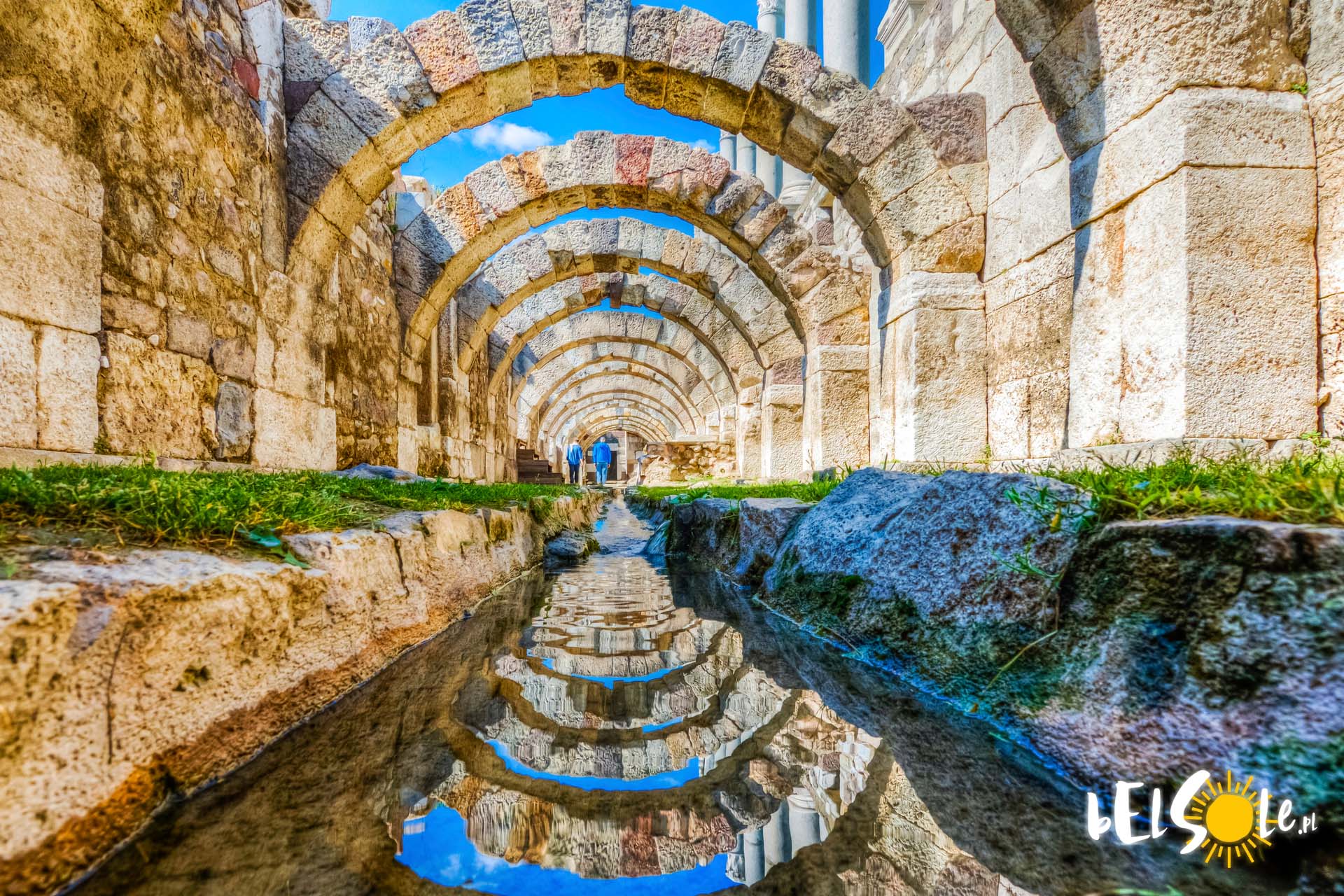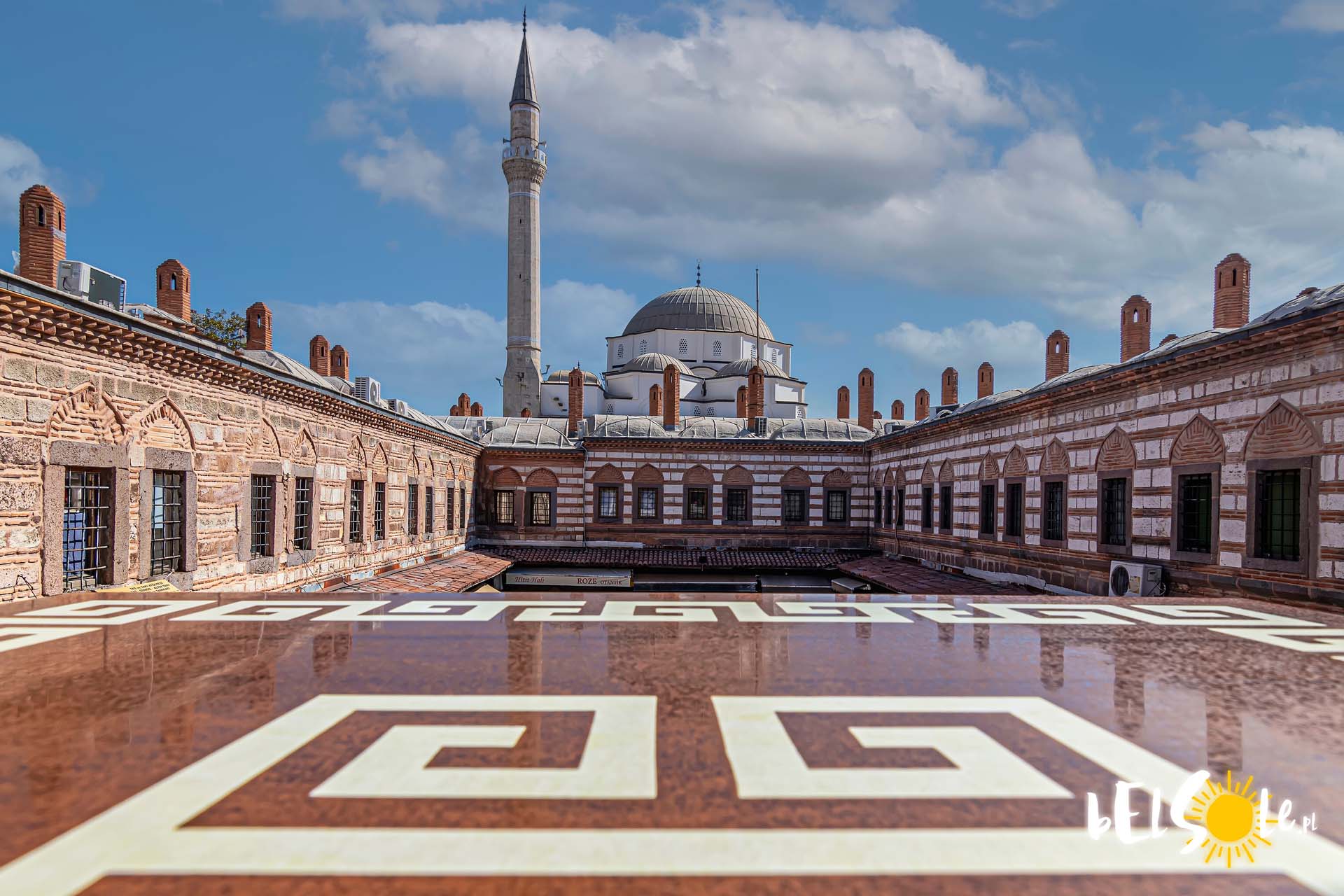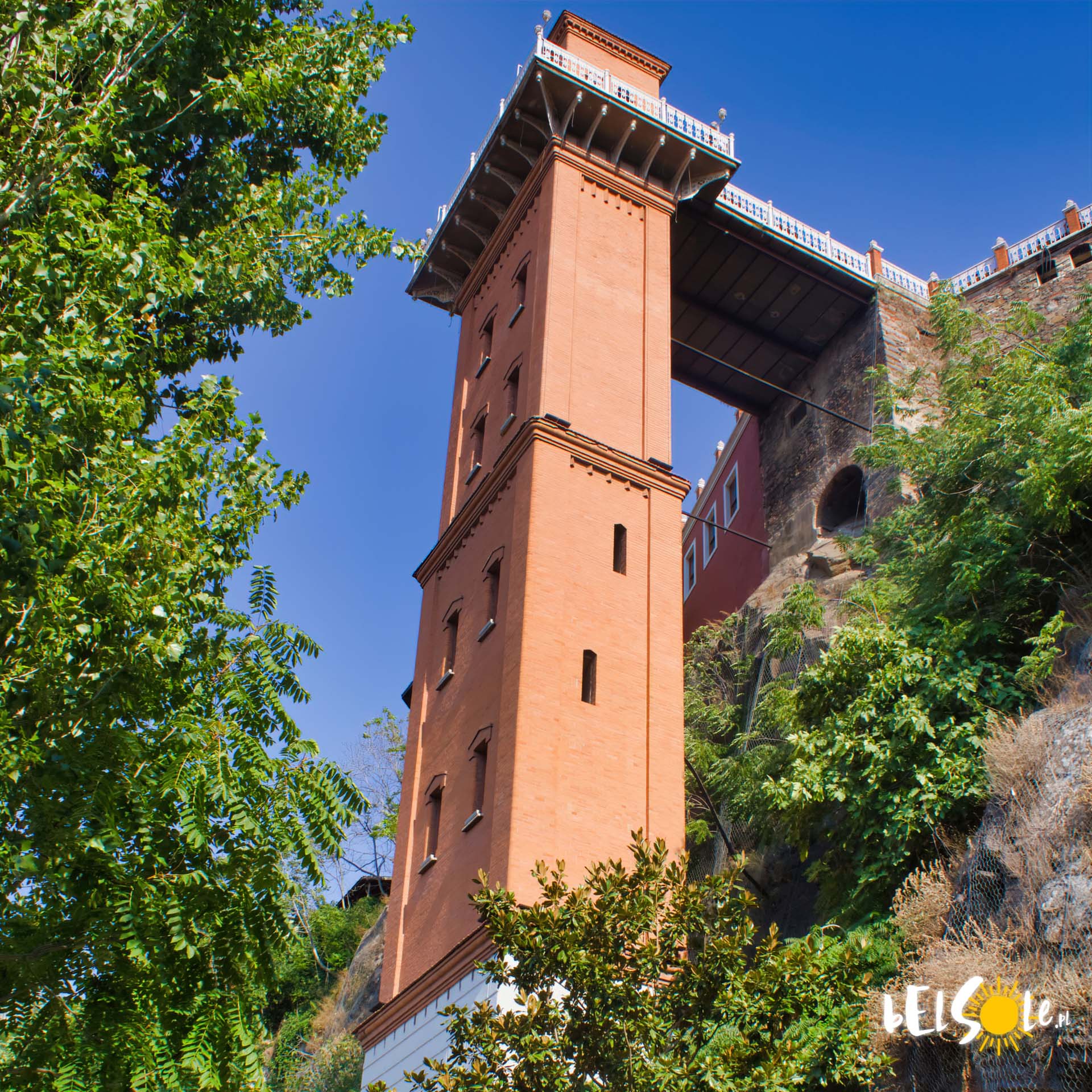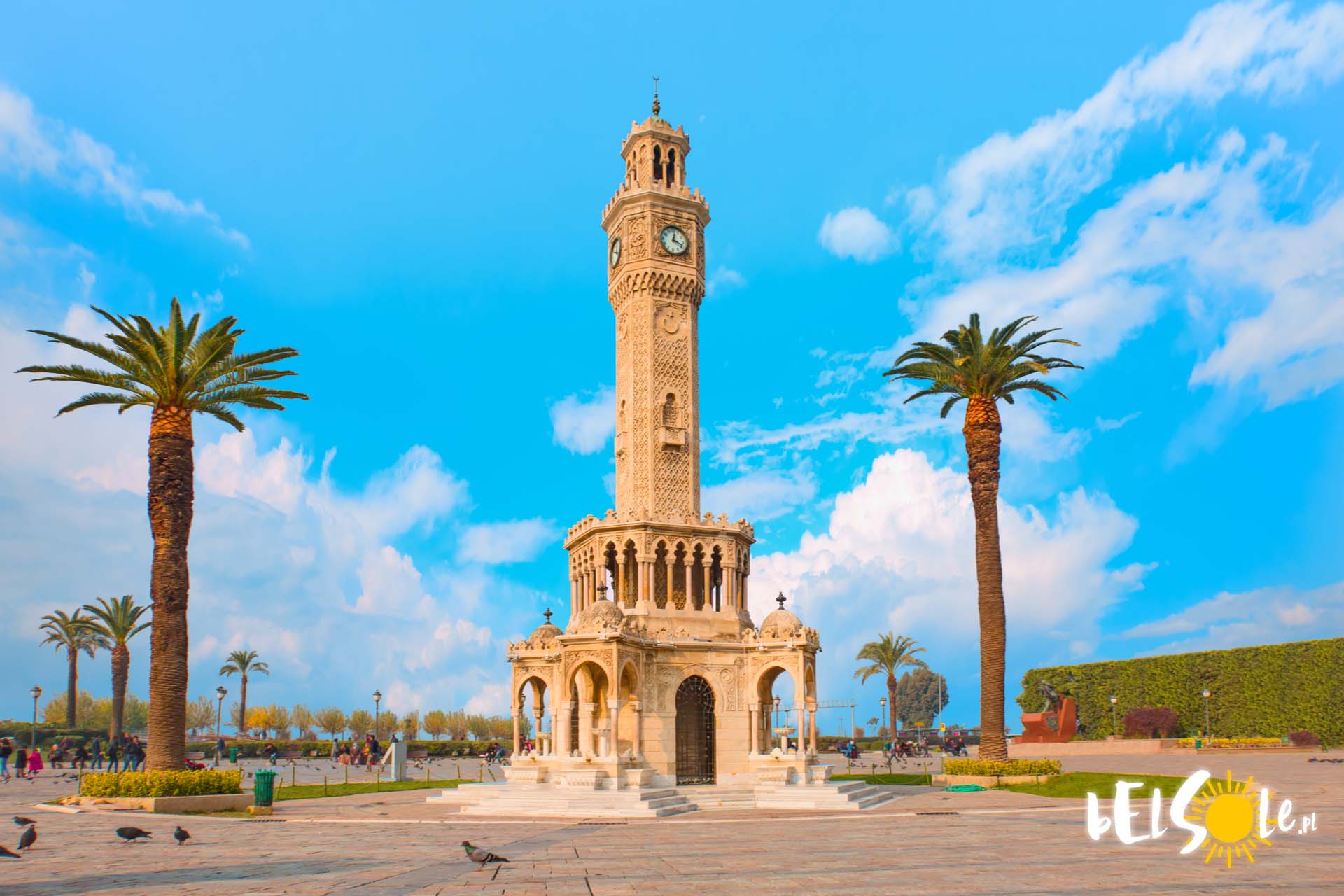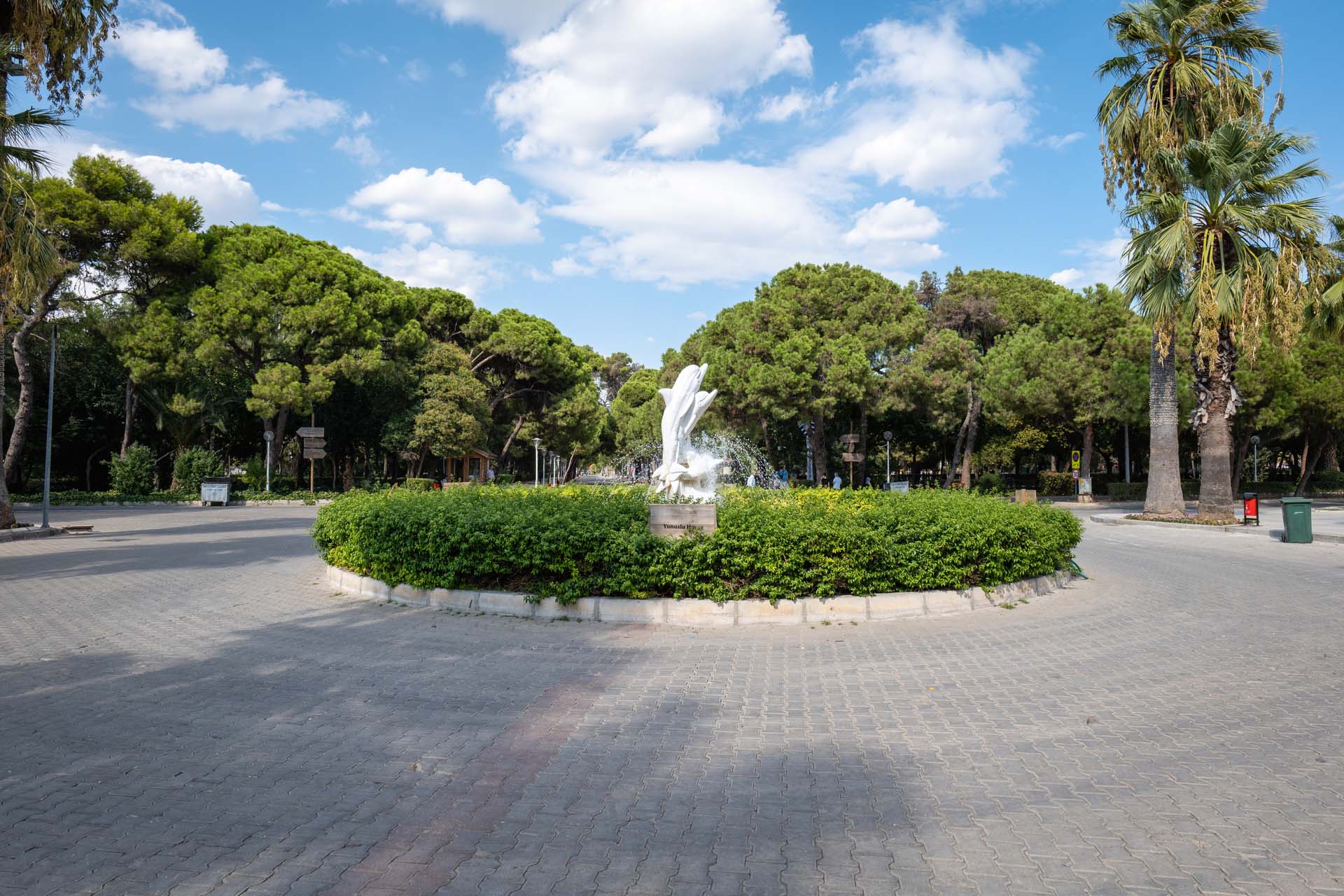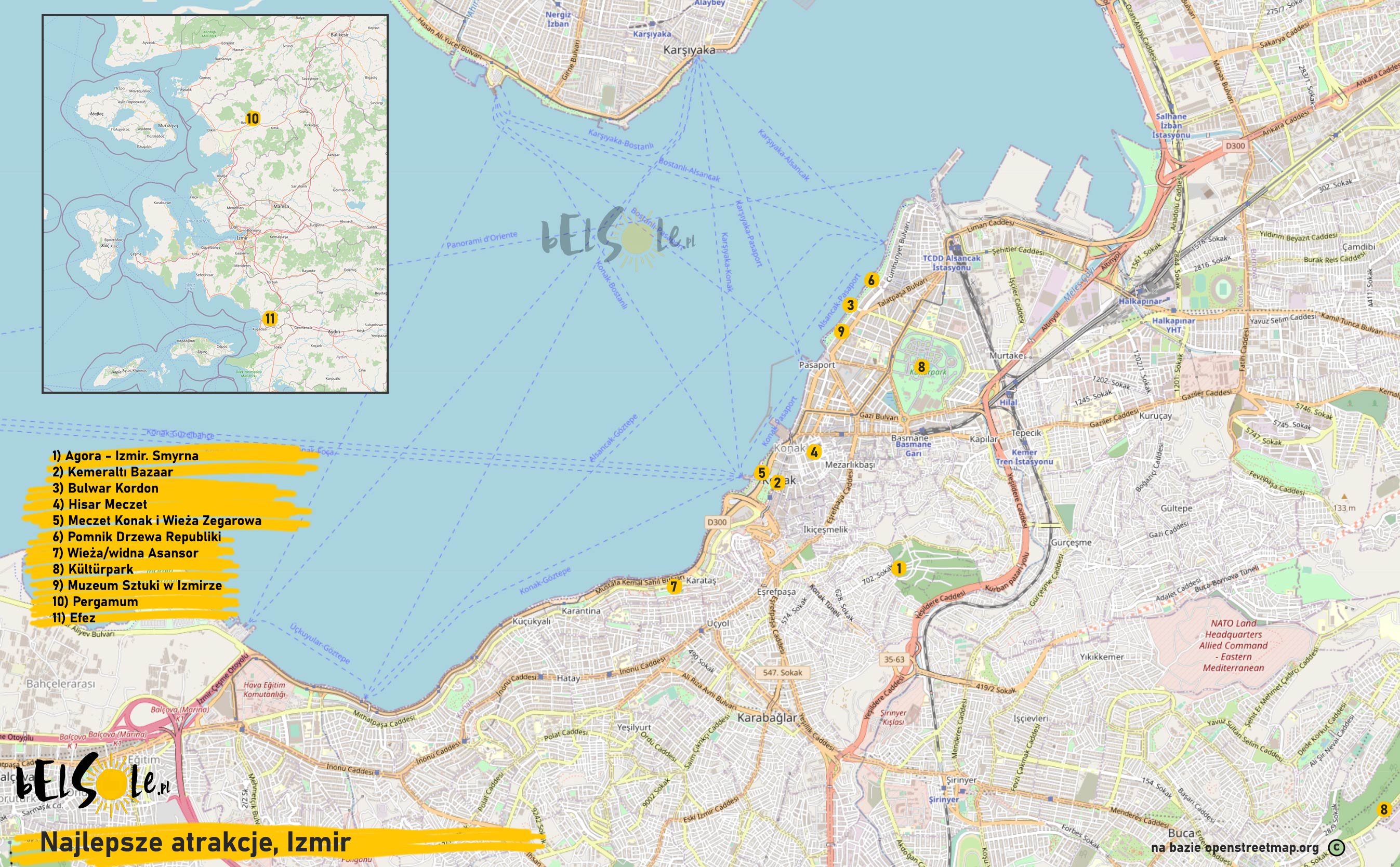İzmir is one of the largest cities in Turkey. You’ll find modernity interwoven seamlessly with its rich history here. Thanks to its coastal location, İzmir is often chosen by tourists as a holiday destination. What is worth seeing while in this metropolis? What should you do in İzmir? We’ll go over that and more in today’s guide on İzmir.
Exploring İzmir
What to see in and near İzmir?
İzmir is the third largest city in Turkey with a population of over 4,300,000 (!). You’ll find plenty of interesting monuments, ruins, generally interesting sites and beautiful beaches both in and around İzmir. How to get around a place so large?
İzmir has a very efficient public transport network, offering a metro, trams and buses. You can also take part in organised tours to places such as Ephesus or Pergamum. Alternatively, if you prefer more freedom, you can always hire a car.
Despite İzmir being called the most western city in Turkey, here are a few tips you should still keep in mind:
- You should consume alcohol in designated areas
- Take off your shoes before entering a temple or mosque,
- Do not discuss politics with locals unless they start themselves
- Remember to bargain at the bazaar, it’s a good practice 🙂
Smyrna
or the ancient history of İzmir
The history of İzmir dates back to 3000 BC. It was then that the first coastal settlement, Bayrakli, was established here. Thanks to its coastal location, the port town developed rapidly and became the most important city in Anatolia apart from Troy. Unfortunately, an invasion by hostile Hittites led to the collapse of Bayrakli around 1500 BC. The settlement was not rebuilt until five centuries later, giving it the name Smyrna (Smyrna did not become İzmir until the 15th century).
Under its new name, the settlement regained its former position as a trading centre. Its location was both a blessing and a curse – its great access to trade meant the city could develop quickly but this also meant that Smyrna became a common target for attacks. It first came under Turkish rule in 1076, though it changed hands several more times before finally becoming a part of Turkey for good. It was not until the peace treaty signed at Lausanne that Turkey was granted the area comprising present-day İzmir. On a side note, in the 20th century, Ottomans referred to it as Infidel Smyrna, because nearly half of the population was Greek and not Muslim.
Sadly, after all that history talk, very little of ancient Smyrna actuall survived here, as, in 1922, a fire destroyed most of the monuments which remained up until that point. We do, however, have some remains still standing.
The Agora in İzmir
Ancient ruins in İzmir
The area of present-day İzmir was occupied by the Greeks in ancient times, hence why the remains of Hellenistic culture can be encountered here. Among other things, the Agora of Smyrna, the former city square, survived all these centuries. There is a fee to enter the ancient ruins, but the area is really quite extensive. Do remember to take your hats and water bottles, it might take you a while to explore the whole place.
Ephesus
Most famous ancient ruins near İzmir
Ephesus is a place that you’ve likely heard of already. It’s one of the best-preserved ancient cities, finding itself on the UNESCO World Heritage Site list. Particularly noteworthy are:
- the Library of Celsus (its façade often appears in photos promoting Ephesus),
- the Corinthian Temple of Hadrian
- the Great Theatre, built at the turn of the first and second century AD and with a capacity to hold 25,000 spectators.
You also have excellently preserved ancient streets, including the Arcadian Street, some 600 metres long, and the Curetes Street, where local trade once took place. In addition to its historical and archaeological value, Ephesus also has great cultural significance, especially for the Christian tradition. It was here that Saint Paul wrote the ‘First Letter to the Corinthians’ and Saint John wrote the Gospel. Many scholars believe that Ephesus is also the place where Jesus’ mother, Mary, was buried. Above the ancient ruins, on Nightingale’s Hill, you can, coincidentally, take a look at the House of the Blessed Virgin Mary.
İzmir bazaar
The shopping centre of the city
No trip to İzmir is complete without a peek into the very heart of the city – its market. The bazaar here, called Kemeraltı, is huge, bustling, intensely colourful, smelling of spices and sweet delicacies. You can find pretty much anything here – from fresh, juicy fruit and aromatic coffees to ceramics, souvenirs, clothes, shoes and even jewellery. If you want a break, there are small cafés and places where you can grab a quick bite to eat between the stalls. Remember that it’s good manners to bargain when shopping at the bazaar. You’ll be surprised how much the final price can differ from the one initially proposed by the vendor.
Kordon Boulevard
The longest promenade in İzmir
One of İzmir’s most recognisable sites is the several miles long coastal boulevard. Along its slabs you can find:
- Green squares where locals and tourists alike tend to come to relax
- Numerous museums, such as the Arkas Sanat Merkezi Art Museum or the Atatürk Museum
- atmospheric cafés and restaurants serving regional specialities.
Kordon Boulevard ends at the port of Alsancak, where you can sit and enjoy the picturesque view of the setting sun.
Check out Turkey’s most beautiful beaches.
Hisar Mosque
Old temple of İzmir
Dating back to the 16th century, the Hisar Mosque is considered the oldest and largest one in İzmir. Your eye will too be invariably caught by its magnificent domes and rich decorations. The building exemplifies the grandeur with which temples were built during the reign of the Ottoman Empire. The interior is divided into ornamented and relief-decorated galleries – separate ones for women and men. You’ll find several great cafés next to the mosque, so take the opportunity if you can and bask in the shadow of the great mosque.
Konak (Yali) Mosque
İzmir’s smallest mosque
Konak Mosque, also known as Yali, is a small temple dating back to the 18th century, located right in the centre of İzmir, on the Konak Square. Next door is the famous Saat Kulesi clock tower and the residence of the city’s governor. Konak is certainly İzmir’s smallest temple and one of the smallest in the entire country. With its distinctive octagonal shape and intricate mosaic tile decorations, the Yali cannot be mistaken for any other Turkish temple. In addition to its size, there is another unique architectural element that sets Konak apart from other mosques – there is only one entrance to its interior.
Tree of the Republic Statue
A unique monument in İzmir
The Tree of the Republic (Cumhuriyet Ağacı Heykeli) is located in the heart of the Gündoğdu Square, situated between İzmir’s two large neighbourhoods, Alsancak and Konak. The statue was designed by Ferit Özşen, a well-known Turkish artist. The monument was created to commemorate the 80th anniversary of the proclamation of the Republic of Turkey. The monument depicts Atatürk and the Turkish cavalry fighting in the War of Independence. Since its creation, the statue has been used as a recognisable meeting spot – that’s where İzmir residents meet to socialise.
Asansör
İzmir’s famous lift tower
The Asansör in İzmir is a structure both useful and historically interesting, located in the Konak district. It was commissioned to be built in 1907 by a Jewish entrepreneur and banker, Nesim Levi Bayraklı. The distinctive narrow building, reminiscent of a tower attached to a rock, serves as a lift connecting the street at the foot of the hill with the one at the top. Asansör was built to make it easier for pregnant women, the elderly and those with disabilities to get to the street above. At the top of the lift-tower is an observation deck – from here you can see the panorama of the whole of İzmir!
Entry is free of charge, so we highly encourage you to go up and see the metropolis from a different perspective.
Saat Kulesi Tower
İzmir’s famous clock tower
The Saat Kulesi Clock Tower is one of the most recognisable sites of the city. There’s not a single İzmir resident who does not have its location memorised. The tower was erected in 1901, to commemorate the 25th anniversary of the reign of Sultan Abdülhamid II. It was designed by Raymond Charles Père, an architect of French origin, permanently residing in Smyrna (so İzmir of old).
Legend has it that the clock tower has not stopped once from its creation. According to other sources, though, the mechanism stopped only once – during a strong earthquake in 1974. We sadly don’t know how much truth there is to either one of the claims. All that we know is that the Saat Kulesi tower has become a symbol of İzmir, one thankfully visible at any time of day and night (thanks to great illuminations).
Kültürpark in İzmir
A phenomenal city park
New York has Central Park, while İzmir has Kültürpark. It is the largest recreational area of the Turkish metropolis and is sometimes referred to as the green lungs of İzmir. You can enjoy all the typical park activities here, so take a nice relaxing stroll along the alleys of various greenery, including palm trees and colourful carpets of flowers. There are also numerous monuments here, museums and even a theme park. The area of this park is truly impressive – the whole area covers more than 420,000 metres square! Kültürpark in İzmir is the perfect place for an afternoon of relaxation, a Sunday picnic or just a short break from the rush.
İzmir Art Museum
Turkey’s first private museum
The İzmir Art Museum is the first private museum to be established in Turkey. It is located in a historic building on Cumhuriyet Boulevard and was founded by a Turkish entrepreneur – Selçuk Yaşar. The collections consist mainly of paintings. You will see temporary exhibitions on the ground floor and permanent museum collections on the upper floor. If you are interested in contemporary paintings, be sure to pay a visit to the Selçuk Yaşar Art Museum in İzmir.
Pergamum near İzmir
An ancient centre of culture and science
Pergamum (Pergamon) is one of the most important archaeological sites in the world, about 60 miles from İzmir. Once an ancient city from centuries ago, which contributed greatly to the development of European civilisation. The settlement was most likely founded in the 7th century BC. At its inception, Pergamon was ruled by the Attalid dynasty, which attached great importance to the development of education and arts. For centuries, the city served as an important academic centre, competing with Alexandria for the title of the cultural and scientific capital of the ancient world. Pergamon was home to the second largest library (the largest being that of Alexandria), which in its heyday contained over 200,000 scrolls!
Unfortunately, the Roman expansion meant that the city faced its slow decline. Most of the library collection was transferred to a newly established library in Egypt, on orders of Marcus Aurelius. Pergamon slowly ceased to be an important academic centre, gradually becoming a faceless settlement, stripped of its grand role in moving civilisation forward.
Back to today, the buildings in the upper part of Pergamon are best preserved. You can see the reconstructed temple of Dionysus, the temple of Trajan, the ancient medical centre called Asklepion and the rock-cut theatre with an auditorium for about 10,000 people.
Map of notable sites in İzmir
What to see in İzmir?
1) Agora – İzmir. Smyrna
2) Kemeraltı Bazaar
3) Kordon Boulevard
4) Hisar Mosque
5) Konak Mosque and Clock Tower
6) Monument to the Tree of the Republic
7) Asansor Tower/Vision
8) Kültürpark
9) İzmir Art Museum
10) Pergamum
11) Ephesus
İzmir is a city stuck in the midst of both worlds – you have plenty of sites pulling you back into its history while next door is the urban centre with ceaseless entertainment and beaches. It does mean, though, that you’ll invariably find something for yourself here. It’s a great place, and we hope you’ll have a fantastic holiday if you choose İzmir.
See also:




